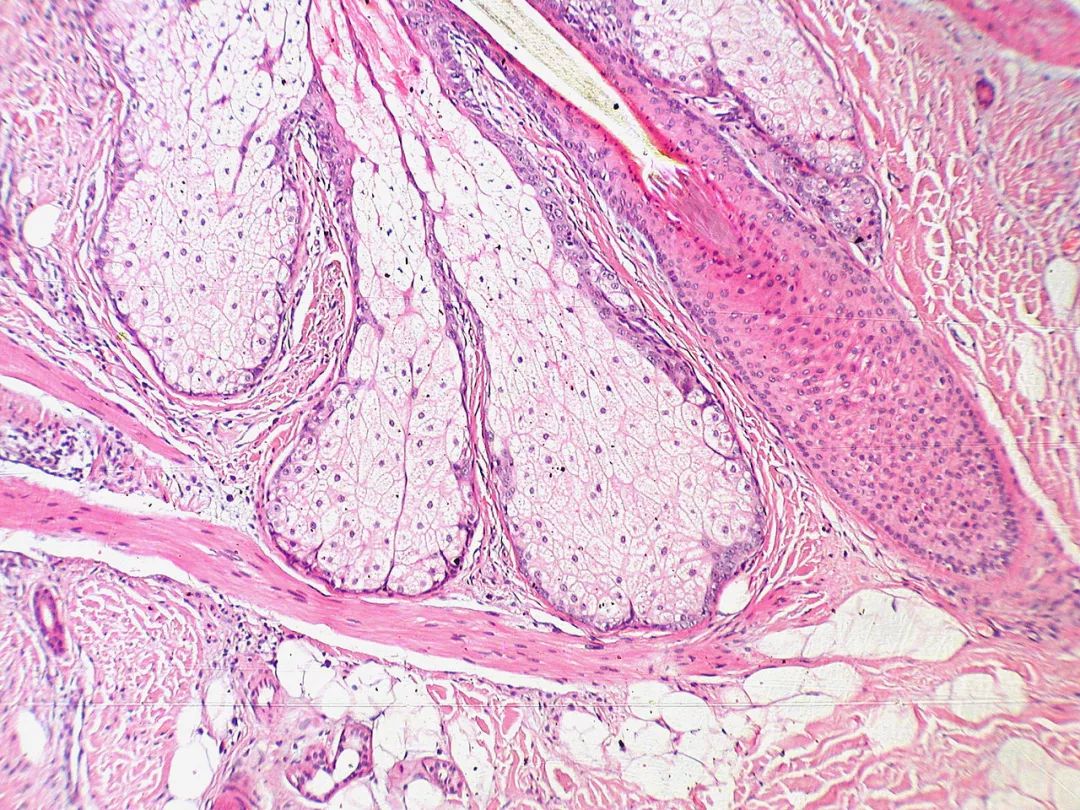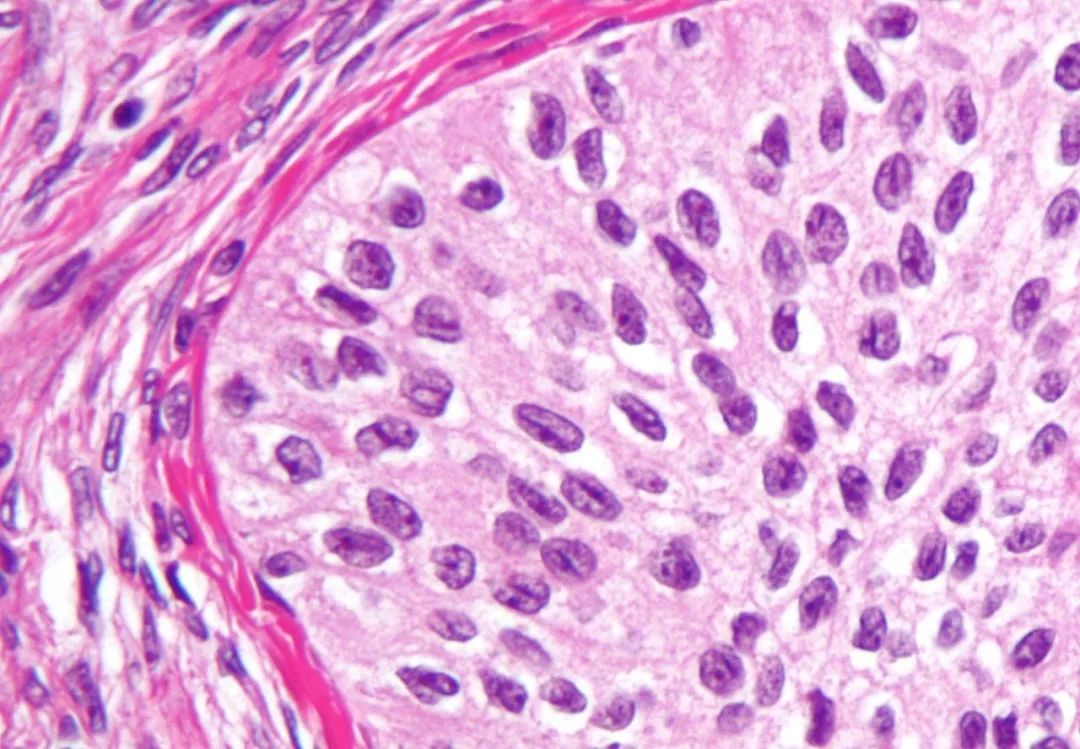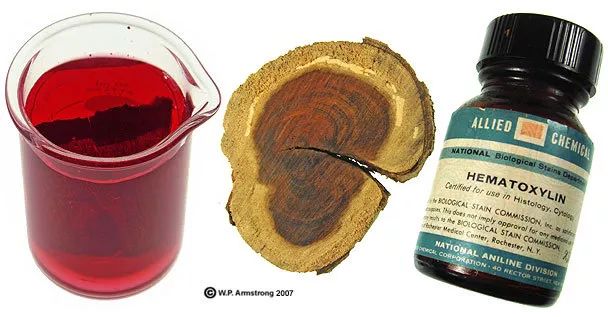Dye is commonly used in laboratories and has triggered hundreds of years of fighting between Britain and Spain
When it comes to harvesting wood, you may feel unfamiliar, and its other name, the ink tree, is not a well-known name. Only when hematoxylin is mentioned, friends who are familiar with medicine or biology will smile knowingly: This is a famous biological tissue stain-and this stain comes from our harvested wood.

Still not impressed? Take a look at this hematoxylin-eosin-stained section. I wonder if it will evoke a little bit of your memories.
Familiar and strange tree
Haematoxylum campechianum, also known as haematoxylum campechianum and ink tree, is a plant of the genus Haematoxylum campechianum in the Fabaceae family. As we all know, Leguminosae is a huge family with 751 genera and more than 19,000 known species. It is the third largest family among embryophytes, second only to Asteraceae and Orchidaceae.
Different from peas and broad beans, Caimu is a small deciduous tree that can usually grow to 5 to 10 meters tall. It is said that the tallest one can grow to 15 meters. Their trunks are short, and multiple branches extend from the trunk. The branches elongate and drop to form a broad, round crown, so they sometimes grow like shrubs. Belize, a tree growing in a wetland. Image: Cephas / wiki commons
The wood has light gray bark, and the trunk has some sunken grooves. As the tree ages, the bark cracks and peels, becoming rougher.
The trunk of the harvested wood.
Similar to most leguminous plants, the leaves of Caimu have a pinnate compound leaf structure, with compound leaves 5 to 10 cm long and 2 to 4 pairs of leaflets. Each leaflet is inverted or egg-shaped. As a deciduous plant native to the tropics, the deciduous habit of the tree is different from that of most plants in the temperate zone: their leaves fall off in the dry season rather than in winter, naturally to save water; and when the rainy season arrives, new leaves fall off. The leaves will grow back.
The pale yellow flowers of Caimu are very small and gathered together into racemes. Different from the obviously bilaterally symmetrical butterfly-shaped flowers that we are familiar with from leguminous plants, although the five petals of Caimu are not equal, they still look very much like a radially symmetrical structure.

But don’t panic. In fact, the flowers of the entire Fabaceae subfamily Caenaceae look like this – you must know that the flowers of the Fabaceae Mimosa subfamily are really radially symmetrical!
What is also interesting is the pods of the wood. Generally speaking, the pods of leguminous plants will split along the dorsal and ventral sutures, like peas, but the pods of the wood split longitudinally from the middle of the pod wall. Split open to reveal seeds.
Although it may sound less and less familiar, it is also often grown as a garden plant due to its delicate foliage and fragrant flowers (go look for it!). In addition, the nectar of the tree is light amber or even almost transparent. It is an important nectar source plant in its place of origin.

Wood is the key
Compared with the less important uses of gardening and honey sources, the essence of wood harvesting lies in it.��Hematoxylin (Haematoxylin) is not a dye itself, but it is widely used in the field of scientific research for cell staining.
Molecular structure of hematoxylin.
In order to observe the structure inside a cell, something needs to be used to selectively dye a part of the material in the cell. Haematein can be formed after oxidation of hematoxylin, which can combine with certain metal ions (mainly trivalent iron ions and aluminum ions) to form colored complexes. The aluminum-haematein complex is alkaline. Eosin, another pigment, is acidic and can stain nucleic acids purple-blue; another pigment, eosin, is acidic and can stain the cytoplasm pink. The combined use of the two is the legendary hematoxylin-eosin staining (often abbreviated as H&E staining), which can clearly separate the various components in cells and contribute a lot to the development of biology and medicine.
H&E-stained section of Brenner’s tumor.
Collected wood has also been used as medicine in history, but there is no scientific basis to prove its effectiveness. On the contrary, hematoxylin is poisonous. Due to the similar color, some unscrupulous merchants market the extract as paclitaxel, or claim that drinking it can relieve hangovers. In animal experiments, hematoxylin can cause elevated body temperature, vomiting, anuria, coma and death. It is also carcinogenic to a certain extent, so be sure to find out the source and don’t eat it casually. (PS: Taking paclitaxel has no effect in preventing cancer!)